#entomopathogenic
Note
have you talked about entomopathogenic fungi here? i think they're extremely cool! huge fan of Massospora cicadina, personally :]
i actually have not, yet !! let me know what you'd like me to say about it. i'll work on a little post with info about it & some examples, though :-) it's such an interesting concept.
massospora cicadina is a fascinating example of this & definitely something worth looking into.
i could even.. do a FOTD.. wink wonk..
i love when people share their thoughts with me on any sort of fungi topics, so i'm glad you sent in an ask !!
#• askbox replies: •#(ask : copper-sands)#[massospora cicadina]#||#entomopathogenic#fungi#fungus#mushroom#mycology#mushrooms#cottagecore#nature#massospora cicadina
5 notes
·
View notes
Link
1 note
·
View note
Photo



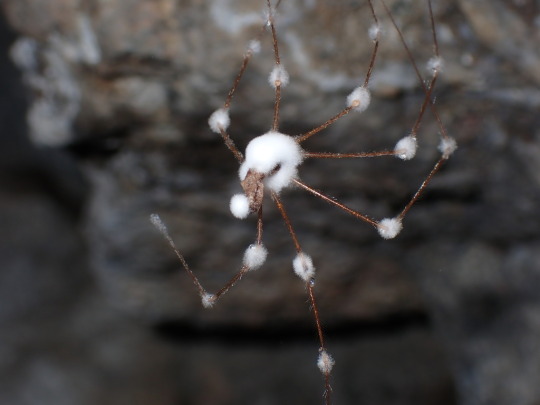



Entomopathogenic fungus (Engyodontium aranearum) infected spiders
Engyodontium aranearum is a species of ascomycete fungus in the family Cordycipitaceae. It parasitizes the long bodied cellar spider, Pholcus phalangioides. It causes 100% mortality in infected spiders.
Photo 1 by bugzone, 2 by garrett_brown, 3 by laurahuckleberry, 4 by lois_rancilhac, 5 by emilvus, 6 by komille277, and 7 (for scale) by samdeakin
#animals#bugs#arachnids#spider#cellar spider#long bodied cellar spider#entomopathogenic fungus#fungus#cordyceps#dead bugs#one nice bug#parasite#Cordycipitaceae
2K notes
·
View notes
Photo
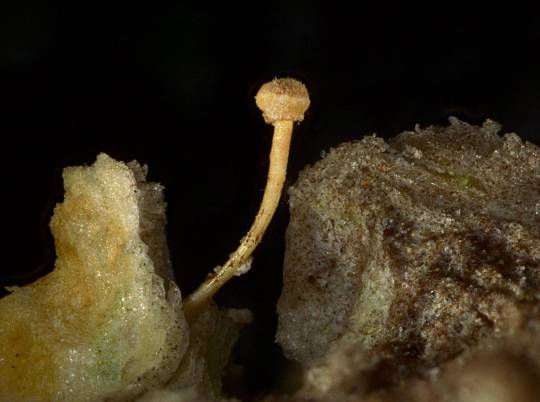
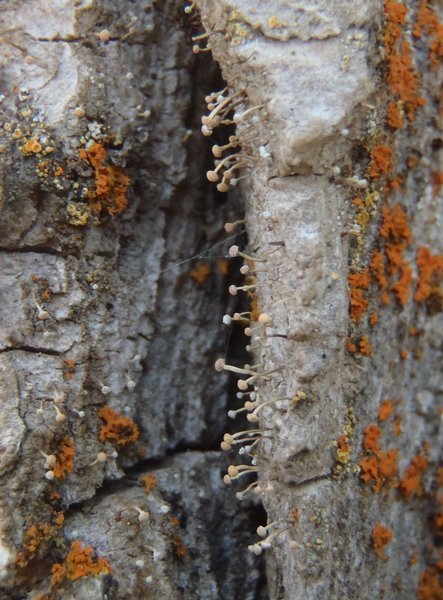


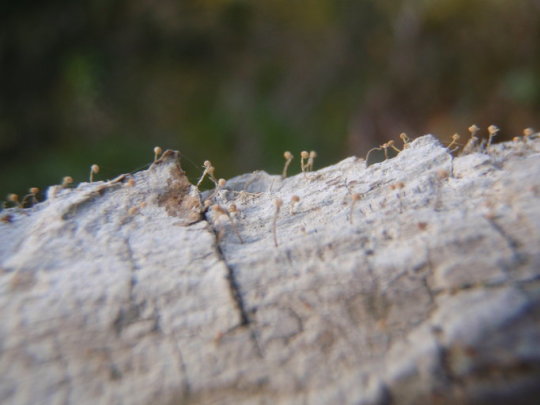




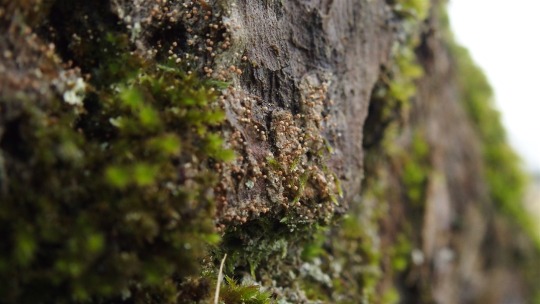
Sclerophora amabilis
Collared glass-whiskers lichen
OMG have you ever seen anything cuter??? I doubt it. Go on . . . I’ll wait . . . nothing, right? That’s what I thought.
images: source | source | source | source
#lichen#lichens#lichenology#lichenologist#lichenized fungus#entomopathogenic fungus#fungi#mycology#ecology#biology#botany#bryology#systematics#taxonomy#life science#environmental science#natural science#nature#naturalist#beautiful nature#weird nature#the natural world#Sclerophora amabilis#Sclerophora#I'm lichen it#lichen a day#daily lichen post#lichen subscribe#I love lichens#lichens are so good
101 notes
·
View notes
Text
I feel like I should get a reward for not infodumping to everyone within 5 metres of me today like that’s hardd, I should be getting something in return
0 notes
Note
Do you know of any monster designs based on spiders infected with entomopathogenic fungus? I'm thinking specifically the sort that makes 'em look like a bunch of pom-poms connected by sticks. I feel like there's potential there!
Sadly can't think of any! And one of the few fungusy spiders I've seen in any media is the Sporecap Spider in Magic the Gathering. Still pretty good though

190 notes
·
View notes
Note
found this critter (orbweaver?) dead, and there's this fuzzy white stuff on the abdomen? is it mold? I'm so curious as to what happened and why it only happened in the abdomen, thanks!
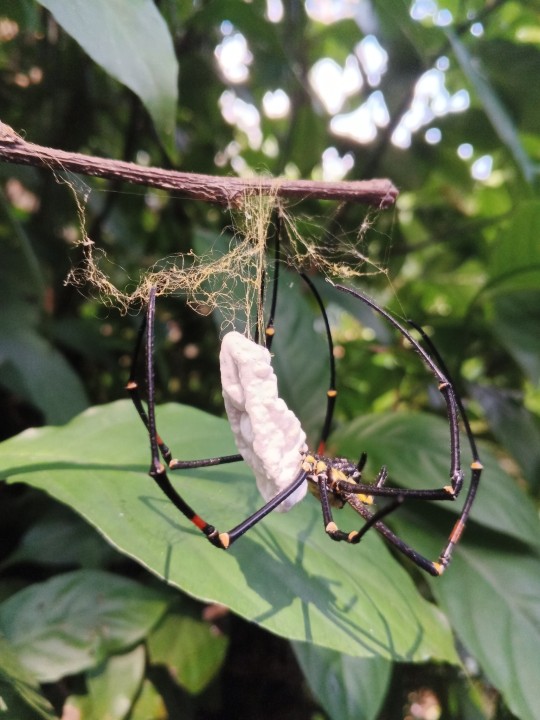
probably an entomopathogenic fungus. I ran across the genus Gilbellula in a very cursory search, but this is a fairly well-observed phenomenon even if most sightings don’t identify the pathogen
261 notes
·
View notes
Text

Funguary Feb 28 - Cryptic Icing Sugar Fungus - Beauveria bassiana
The group of entomopathogenic fungi known as icing sugar fungus also affect True Fae. In this case, it is one of the few ways that the fae can become undead.
#original art#funguary#funguary2024#funguary 2024#mushroom#fungus#fungi#parasite#cryptic#icing sugar#icing sugar fungus#beauveria bassiana#undead
22 notes
·
View notes
Text





Entomopathogenic fungi infecting various invertebrate hosts @malusrecord
#aesthetic.#interests.#relations ; hesienberg.#tagging them for reasons lol#biology.#the alfar's greatest fear tbf#mushrooms#parasitic fungi#bugs
6 notes
·
View notes
Text
Beauveria bassiana: A Powerful Biocontrol Agent for Sustainable Pest Management
Beauveria bassiana, a naturally occurring entomopathogenic fungus, has become a crucial tool in modern agriculture for managing a wide range of insect pests. Known for its ability to control pests without harming the environment, Beauveria bassiana is widely used in integrated pest management (IPM) programs. For farmers and gardeners who prioritize sustainable agricultural practices, this fungus offers an eco-friendly alternative to chemical pesticides, effectively controlling insect pests while promoting ecological balance.
How Beauveria bassiana Works: Nature's Pest Control
The mode of action of Beauveria bassiana is one of the most fascinating aspects of this fungus. It targets insect pests through a unique biological process that begins when the fungal spores come into contact with the exoskeleton, or cuticle, of the insect. The spores adhere to the cuticle and germinate, producing hyphae that penetrate the insect's outer layer.
Once inside the insect's body, Beauveria bassiana multiplies, consuming the host's internal tissues. As the fungus proliferates, it releases toxins that further weaken the insect, leading to its eventual death. Over time, the fungus grows out of the dead insect's body, releasing more spores into the environment, ready to infect additional pests.
This natural process is both effective and sustainable. Unlike chemical pesticides, which often kill beneficial insects and degrade the environment, Beauveria bassiana targets only the pests it infects, leaving beneficial organisms, such as pollinators and natural predators, unharmed. This selective action makes Beauveria bassiana an invaluable asset for farmers and gardeners seeking to maintain ecological balance while protecting their crops.
Broad-Spectrum Activity Against Insect Pests
One of the most significant advantages of Beauveria bassiana is its broad-spectrum activity, meaning it can target a wide range of insect pests. Some of the most common pests it controls include aphids, whiteflies, thrips, beetles, caterpillars, and weevils. These insects are notorious for damaging crops by feeding on leaves, stems, and roots, often causing significant yield losses if not managed effectively.
For instance, aphids and whiteflies can transmit harmful plant viruses, while caterpillars and beetles can cause severe physical damage to crops. Beauveria bassiana helps combat these pests by acting as a biological control agent that reduces pest populations without the need for harmful chemicals. This broad-spectrum activity makes it a versatile tool for protecting a variety of crops, from vegetables and fruits to ornamental plants and greenhouse crops.
Because Beauveria bassiana works through a biological mechanism, it is less likely to result in pest resistance compared to chemical insecticides. Over time, pests can develop resistance to synthetic chemicals, rendering them less effective and requiring higher doses to achieve control. In contrast, the natural infection process of Beauveria bassiana makes it a more sustainable and long-term solution to pest control, helping to reduce the risk of resistance.
Maintaining Ecological Balance: Protecting Beneficial Insects
Insecticides that target pests often pose a risk to beneficial insects, such as pollinators and natural predators. Pollinators, like bees, play an essential role in crop production by enabling the fertilization of many plants, leading to the formation of fruits and seeds. Similarly, natural predators like ladybugs and lacewings help keep pest populations in check by feeding on aphids, mites, and other harmful insects.
Beauveria bassiana offers an environmentally friendly alternative by specifically targeting pests while leaving beneficial insects unharmed. This selective action helps preserve the delicate ecological balance that is critical to healthy crop ecosystems. By promoting natural predator populations and protecting pollinators, Beauveria bassiana contributes to a more resilient and sustainable agricultural system.
For example, in greenhouse environments where biological controls are essential, Beauveria bassiana can be applied without disrupting beneficial insects like parasitic wasps or pollinating bees. This makes it a vital component of integrated pest management programs, where maintaining biodiversity is key to long-term crop health and productivity.
Sustainable Pest Management for Farmers and Gardeners
The increasing demand for sustainable farming practices has led many farmers and gardeners to seek alternatives to chemical pesticides. Beauveria bassiana stands out as a reliable and sustainable solution that aligns with these goals. By reducing the reliance on chemical pesticides, it helps lower the environmental impact of farming while providing effective pest control.
Farmers and gardeners using Beauveria bassiana can expect several benefits:
Healthier Crops: With pests controlled naturally, crops can grow without the stress of constant pest attacks. This leads to stronger, more vigorous plants that are better able to produce higher yields.
Reduced Pest Pressure: Over time, Beauveria bassiana helps to decrease pest populations, reducing the overall pressure on crops. This long-term effect is particularly valuable in areas where pests are persistent and difficult to manage with traditional methods.
Environmentally Friendly: Unlike chemical pesticides that can leach into the soil and waterways, causing harm to non-target organisms, Beauveria bassiana is environmentally safe. It does not contaminate the soil or water, making it ideal for use in organic farming systems.
Long-Term Control: Because Beauveria bassiana works by infecting pests rather than poisoning them, it provides long-term control without the need for frequent reapplications. This makes it a cost-effective and labor-saving option for pest management.
Improved Soil Health: Chemical pesticides can harm beneficial soil microorganisms, leading to degraded soil quality over time. By using biological agents like Beauveria bassiana, farmers can maintain healthy soil ecosystems that support crop growth and productivity.
Integrated Pest Management and the Future of Agriculture
Beauveria bassiana plays a central role in integrated pest management (IPM), a strategy that combines biological, cultural, and chemical methods to control pests in an environmentally sustainable way. By incorporating Beauveria bassiana into IPM programs, farmers can reduce their reliance on chemical inputs, improve crop health, and protect the environment.
As the demand for sustainable agricultural practices grows, the use of biocontrol agents like Beauveria bassiana is likely to increase. Its ability to provide long-term pest control while maintaining ecological balance makes it an essential tool in the future of farming.
Conclusion
Beauveria bassiana is a powerful and versatile biological control agent that offers sustainable pest management solutions for farmers and gardeners. Its ability to target a wide range of insect pests without harming beneficial insects makes it an ideal choice for those looking to reduce their reliance on chemical pesticides and promote environmental sustainability. As part of integrated pest management strategies, Beauveria bassiana provides long-term pest control solutions that contribute to both agricultural productivity and ecological balance.
By incorporating Beauveria bassiana into crop protection practices, farmers can enjoy healthier crops, reduced pest pressure, and a more sustainable approach to pest management. Whether used in large-scale farming operations or small home gardens, this entomopathogenic fungus is helping to shape the future of sustainable agriculture, ensuring that crops are protected while the environment is preserved for generations to come.
0 notes
Text
freaky fungi fact : entomopathogenic fungi !!
entomopathogenic fungi are fungi that can kill or seriously disable insects.
this group of fungi lives in the soil & infects insects by penetrating their bodies to feed on them, & eventually kill them. they are sorted into five divisions (ascomycota, zygomycota, deuteromycota, oomycota & chytridiomycota), each with their own properties.
they have a big impact on insect population dynamics in soil.
there are currently over 800 different entomopathogenic fungi that have been identified.
below the cut are some images of insects that have been infected. CW for animal death + bugs / other critters + just general disturbing imagery.
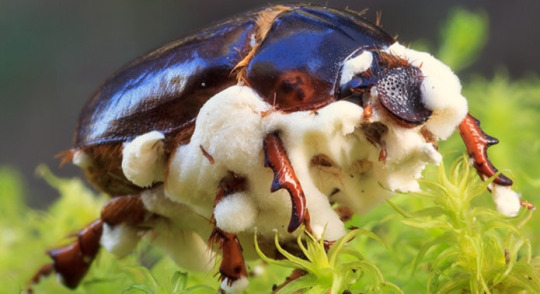
a beetle parasitised by an unnamed entomopathogenic fungus. [source]

a cicada parasitised by the massospora cicadina fungus. [source]

a spider parasitised by an unnamed entomopathogenic fungus. [source]
[the lovely user who asked me to talk about this : source<3]
#thank you to tumblr user copper-sands for suggesting i talk about this<3#i learn so much every day.#|#• finn's freaky fungi fact ^^ •#[massospora cicadina]#||#fungi#fungus#mushroom#mycology#mushrooms#earth#nature#forestcore#cottagecore#foraging#cw animal death#cw bugs#bugs#insects#animal death#parasites#massospora cicadina#entomopathogenic#fungal parasites#insect#critters#science#biology#ecology
106 notes
·
View notes
Link
1 note
·
View note
Photo

Weevil infected with entomopathogenic fungus
Photographed in Peru by Frank Deschandol // Instagram
Shared with permission; do not remove credit or re-post!
#animals#curators on tumblr#insects#bugs#beetle#weevil#entomopathogenic fungus#parasitic fungus#cordyceps#dead bugs#Ophiocordyceps curculionum#Ophiocordyceps#one nice bug
3K notes
·
View notes
Text
0 notes
Text
Cordyceps, le champignon star de The Last of Us qui possède des bienfaits étonnants
See on Scoop.it - EntomoNews
Le cordyceps n'est pas uniquement l'une des stars de The Last of Us, il existe vraiment dans la nature, mais il s'attaque aux fourmis
Publié le le 13 mai 2024 à 08:00
Par Moémi Le Boucher
[...]
Les bienfaits du cordyceps chez l’Homme
Si vous avez joué ou regardé la série The Last of Us, vous ne comprenez pas comment cela peut être vrai. Pourtant, un article de Forbes Health du 19 octobre 2023 nous l’explique.
Ainsi, on apprend que ce champignon, qui transforme tout de même des fourmis et autres insectes en zombies pour se reproduire, est utilisé depuis des temps très anciens dans la médecine asiatique.
Les plus fréquemment utilisés sont deux sous-espèces : cordyceps sinensis et cordyceps militaris.
Ils sont considérés comme des adaptogènes. Autrement dit, ils peuvent avoir de nombreux bienfaits en fonction des besoins de l’individu. Ils n’auront pas non plus les mêmes effets en fonction de la personne qui les consomme.
Parmi les bienfaits du cordyceps on compte :
Des performances physiques accrues
Amélioration de la respiration
Amélioration de la réponse du système immunitaire
Des propriétés anti-inflammatoires
Cependant, comme beaucoup de substances médicales, on lui prête aussi de nombreux effets secondaires comme :
Des nausées
Des réponses potentiellement allergiques
Un assèchement de la bouche
Des épisodes diarrhéïques
Il ne convient pas non plus aux femmes enceintes, aux personnes déjà sous traitement ainsi qu’aux personnes souffrant de maladies auto-immunes.
Cependant, et vous l’aurez remarqué, la transformation en zombie (ou infecté) comme dans la série ou le jeu, ne fait pas partie des effets secondaires."
(...)
------
NDÉ
References
Cordyceps as an Herbal Drug. National Center for Biotechnology Information. Accessed 9/7/2023.
Tuli HS, Sandhu SS, Sharma AK. Pharmacological and therapeutic potential of Cordyceps with special reference to Cordycepin. 3 Biotech. 2014;4(1):1–12.
Ashraf SA, Elkhalifa AEO, Siddiqui AJ, et al. Cordycepin for Health and Wellbeing: A Potent Bioactive Metabolite of an Entomopathogenic Medicinal Fungus Cordyceps with Its Nutraceutical and Therapeutic Potential. Molecules. 2020;25(12):2735.
Adenosine Triphosphate. Britannica. Accessed 9/7/2023.
VO2 Max Testing. University of Virginia School of Medicine. Accessed 10/2/2023.
Chronic obstructive pulmonary disease (COPD) – Criteria. BMJ Best Practice. Accessed 10/2/2023.
St. George’s Respiratory Questionnaire. dbGaP. Accessed 10/2/2023.
Sen P, Kemppainen E, Oresic M. Perspectives on Systems Modeling of Human Peripheral Blood Mononuclear Cells. Frontiers in Molecular Biology. 2017;4:309768.
Ashraf SA, Elkhalifa AE, Siddiqui AJ, et al. Cordycepin for Health and Wellbeing: A Potent Bioactive Metabolite of an Entomopathogenic Medicinal Fungus Cordyceps with Its Nutraceutical and Therapeutic Potential. Molecules. 2020;25(12):2735.
Cordyceps. Memorial Sloan Kettering Cancer Center. Accessed 10/2/2023.
via 4 Benefits Of Cordyceps, According To Experts – Forbes Health, 19.10.2023 https://www.forbes.com/health/nutrition/benefits-of-cordyceps/
0 notes
Text
Cockroach Pest Control | tsdpestcontrol.com.au
Cockroaches hide at floor level, so inspect rooms there and near kitchen sinks and stoves. Keep counters and cabinets clean, store food in airtight containers, and vacuum or sweep regularly.
Avoid attracting cockroaches by removing outdoor habitats like wood piles, leaf piles and overgrown underbrush. Also, trim foundation plantings, and keep trash cans tightly closed.
Exclusion
The best way to prevent cockroaches from entering the home is by eliminating food sources, blocking access and sealing entry points. Thoroughly clean kitchens, sanitize sink cabinets and tubs/showers, and keep trash can lids tightly sealed. Store firewood away from the house and trim shrubs to limit overgrown underbrush.
Identifying signs of a cockroach pest control infestation is also important. Check for smear marks at wall-floor junctions where cockroaches crawl, and look for droppings that are small, black and irregular in shape. Infestations also produce an aggregation pheromone that taints surfaces and attracts more cockroaches.
Seal entry points into the building, including cracks around windows and pipes, and close gaps near vents. Ensure that garbage cans are tightly closed and that doors to outdoor trash containers are securely sealed. Remove leaf and wood piles, and reduce moisture in foundation plantings by emptying standing water and rinsing pots and birdbaths.
Insecticides
Cockroaches can be controlled with spray and dust formulations of organophosphate, carbamate, or pyrethroid insecticides. These are formulated as aerosol sprays, dilute ready-to-use sprays, or liquid concentrates that must be diluted and applied with hand pressurized sprayers (see table 2). These can be used as barriers around doors and other entry points, along baseboards, and beneath and behind appliances, to prevent cockroaches from entering or controlling them shortly after they do so.
However, a single treatment is unlikely to completely eliminate a heavy infestation of cockroaches. Therefore, a good sanitation program that limits the amount of food available and treats voids should be employed in addition to a control strategy.
Alternatives to conventional pest control services spray treatments include aeration, nematode and entomopathogenic fungus applications, and RNAi. Although many of these have been criticized in the literature, they may be useful in conjunction with other control strategies or as supplemental treatments [122].
Baits
Cockroach baits contain a food element and slow-acting insecticide. Once cockroaches consume the bait, they die within a few hours and, as they die, they contaminate their surroundings with feces and vomit that other cockroaches will then ingest -- spreading the poison throughout the population. Baits typically have a longer shelf life than sprays and can be used in places where sanitation may not be available.
Baits can be especially effective when supplemented with good sanitation, such as emptying cabinets and vacuuming crumbs, trash and other debris. However, roaches can also develop "bait aversion" when exposed to the same bait over time, so it's important to rotate different types of bait products.
The most common cockroach baits are gel baits. Some come in ready-to-use plastic stations, while others are applied with a large plastic syringe (like a ketchup syringe). Both types of cockroach baits should be placed label side down in warm, dark and moist areas where cockroaches hide (such as behind sinks, in walls, in corners and in cabinets). They also work well in hard-to-reach locations such as the wall-floor juncture behind stoves, refrigerators and dishwashers.
Prevention
The first step an exterminator takes is to identify which type of cockroach is present. This is important because only a small number of the hundreds of cockroach species in the world actually invade homes and businesses.
Cockroach infestations can spread human pathogens on food handling surfaces and contaminate the air in soiled areas. They also aggravate asthma and allergies in sensitized individuals.
Sanitation is a key to prevention. Store food in sealed containers, and clean up crumbs or spills immediately. Regularly sweep and vacuum floors and clean behind and under cabinets. Use garbage cans with tight-fitting lids and empty them regularly.
Since cockroaches require water and shelter to survive, reducing or removing these sources is an essential part of any treatment plan. This includes reducing outdoor pet food and bird feeders, sealing gaps around doors and windows, caulking cracks in the home’s walls or tile, and preventing access to harborage locations such as floor drains, boiler rooms, crawl space vents, and steam tunnels.
0 notes